
The last week was one of conference goodness, with plenty of breaks lit up by interesting conversations. Here are the pictures and opinions gathered while prowling the floors, in random order…
Firstly, depending on where you start from, Small-angle Scattering may have its 100 year anniversary this year! Dr. Heinrich Stuhrmann talked about the history of small-angle scattering, and showing that Peter Debye published about scattering to small angles of X-rays in 1915. Unfortunately, we are now 75% through 2015, and have therefore pretty much missed the window to push SAXS more into the spotlight.
The poster session was interesting but somewhat chaotic for me. There were many posters I had planned to see, divided over two sessions and two rooms. However, during the time I was engaged in presenting my own and talking to some of the many interesting people attending, and so found little time to actually read other people’s posters. If only they could be found online somewhere as pseudo-post-conference memorabilia!
There was a very interesting talk by Marianne Liebi (who later won the Kratky prize) on 3D tomographic SAXS reconstruction through a material. This means that a scattering pattern could be reconstructed for every volume element inside a material. Not a light task, but the presenter mentioned this task could be done in Matlab on a multi-GPU-equipped computer in finite amounts of time.
I discovered there was a good interest not only in McSAS, but also in the data correction methods. Hopefully, the latter can be collaborated on, and the former can get more widespread acceptance. It was interesting to see that also companies are getting interested in the Monte Carlo method, but not to worry, Ingo and I agree that the best way forward for the software is to stay open source the way it has been.
During the conference, it was mentioned (by Paul Butler) that the site has remained somewhat light in content for the last few months. With the upcoming stability, it should improve considerably. You can help out, though, by submitting articles of interest to the general SAS community to this site (ask me how). It may also be possible to provide regular contributors with their own account on this site (hosting organization statutes permitting)!
Otto Glatter, in his first invited talk, also mentioned that it is not possible to get both information on the scatterer shape as well as the polydispersity. Talking to him afterwards revealed that this is a long-standing misunderstanding in small-angle scattering. Time to educate ourselves on the limitations of our technique! Other advice was: “Don’t do only Kratky plots”, and “we need more post-fit interpretation of results” [not direct quotes].
Jan Skov Pedersen talked about the gradual improvements in the 15 years of development on his instrument. While initially they started out with a decent flux of photons per second on the sample position, their latest upgrade resulted in a flux on the order of
photons per second, albeit with a rather large beam size. Laboratory instruments “for the win” here.
Andrew Allen talked about the standardisation of the glassy carbon samples. They will be certified within the Q-range of , and cost about 1000 dollars. They are intended for use and consumption by industry, and use of “uncertified” samples should, therefore, not be affected.
After the conference, I managed to get ill for two days. The stress of the moving, (theoretically impossible) administrative tasks and the conference finally took its toll on me. The fever is now receding, and so work will continue shortly.
I forgot most of the information on the upcoming SAS2018 conference in the middle-north of America (apart from the venue being a Very Nice Place To Be). The one thing that did stick is that that conference is intended to have a session on the teaching of SAS, which is a nice addition to the regular programming.

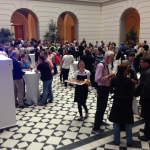
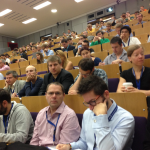
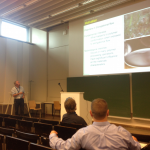
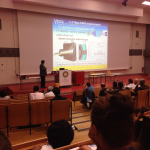
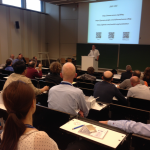

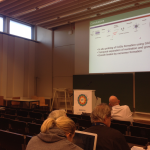
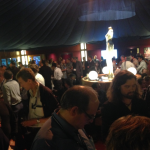
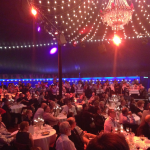
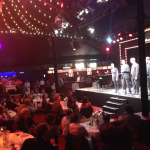
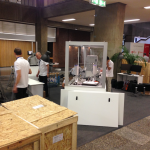
Leave a Reply